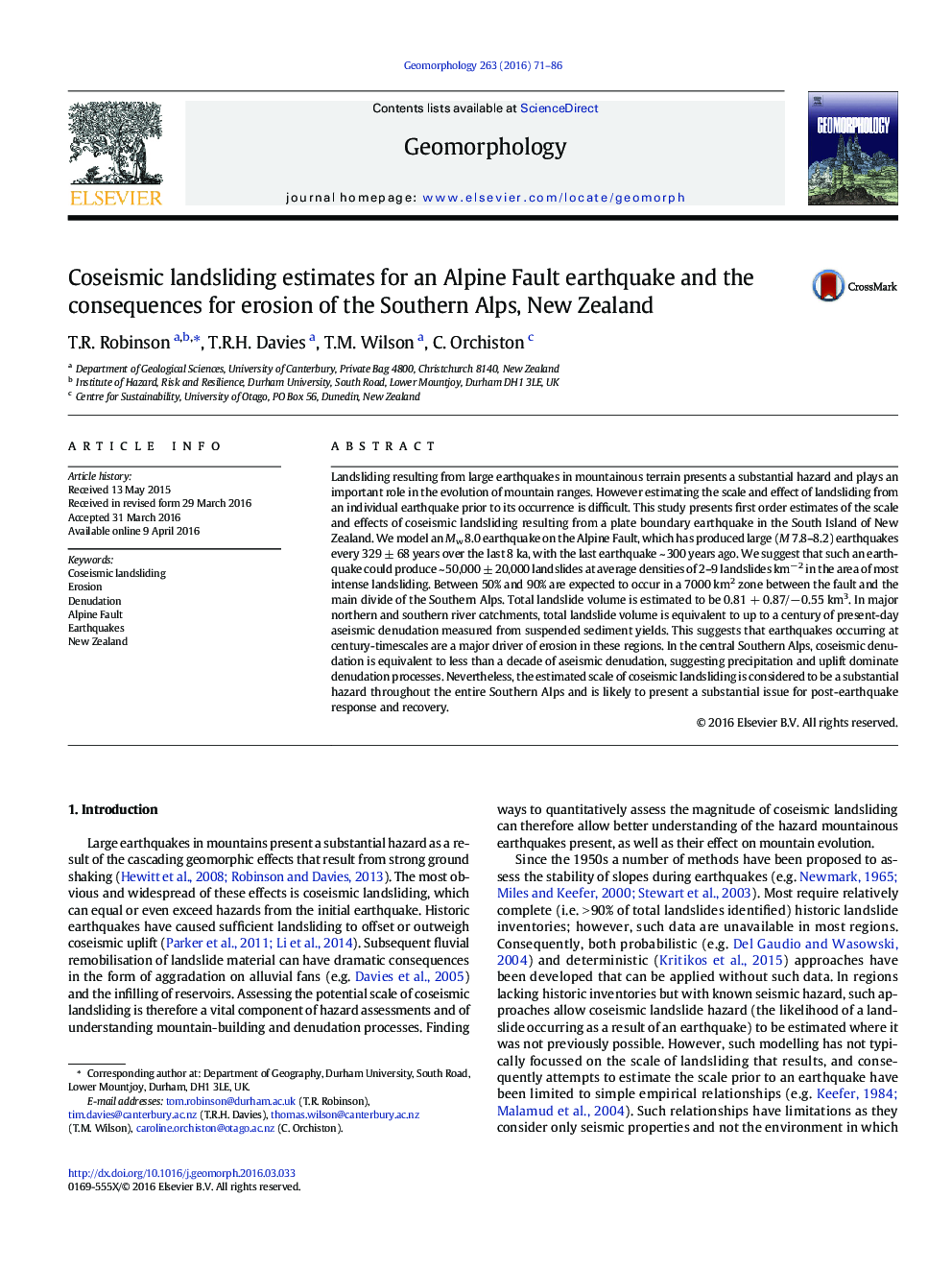| کد مقاله | کد نشریه | سال انتشار | مقاله انگلیسی | نسخه تمام متن |
|---|---|---|---|---|
| 4684031 | 1635386 | 2016 | 16 صفحه PDF | دانلود رایگان |
• Spatial distribution of landslide hazard for an Mw 8.0 Alpine Fault earthquake is modelled
• 28% probability of such an earthquake in the next 50 years
• 30,000 – 70,000 landslides are anticipated with 0.2–1.7 km3 total volume
• Average landslide densities expected to be 2–9 landslides km− 2
• Alpine-fault-related erosion in N and S catchments is equivalent to 10–70 years aseismic erosion
Landsliding resulting from large earthquakes in mountainous terrain presents a substantial hazard and plays an important role in the evolution of mountain ranges. However estimating the scale and effect of landsliding from an individual earthquake prior to its occurrence is difficult. This study presents first order estimates of the scale and effects of coseismic landsliding resulting from a plate boundary earthquake in the South Island of New Zealand. We model an Mw 8.0 earthquake on the Alpine Fault, which has produced large (M 7.8–8.2) earthquakes every 329 ± 68 years over the last 8 ka, with the last earthquake ~ 300 years ago. We suggest that such an earthquake could produce ~ 50,000 ± 20,000 landslides at average densities of 2–9 landslides km− 2 in the area of most intense landsliding. Between 50% and 90% are expected to occur in a 7000 km2 zone between the fault and the main divide of the Southern Alps. Total landslide volume is estimated to be 0.81 + 0.87/− 0.55 km3. In major northern and southern river catchments, total landslide volume is equivalent to up to a century of present-day aseismic denudation measured from suspended sediment yields. This suggests that earthquakes occurring at century-timescales are a major driver of erosion in these regions. In the central Southern Alps, coseismic denudation is equivalent to less than a decade of aseismic denudation, suggesting precipitation and uplift dominate denudation processes. Nevertheless, the estimated scale of coseismic landsliding is considered to be a substantial hazard throughout the entire Southern Alps and is likely to present a substantial issue for post-earthquake response and recovery.
Journal: Geomorphology - Volume 263, 15 June 2016, Pages 71–86
